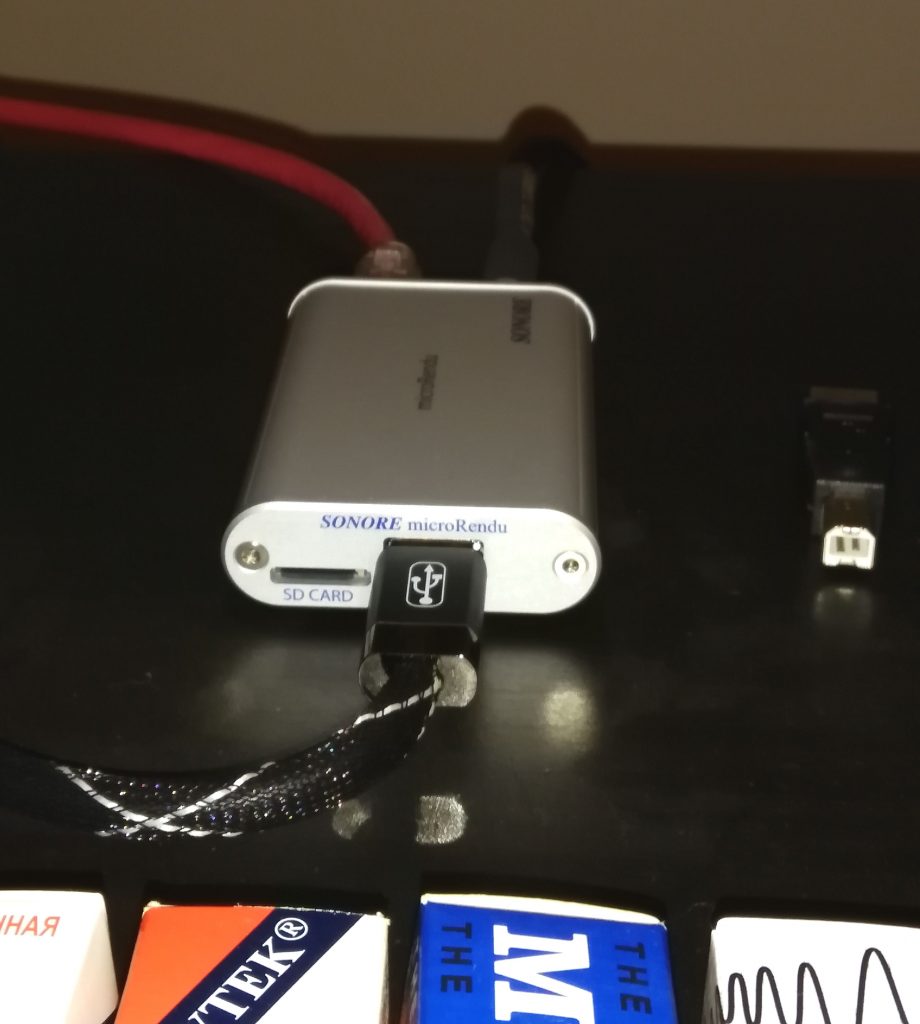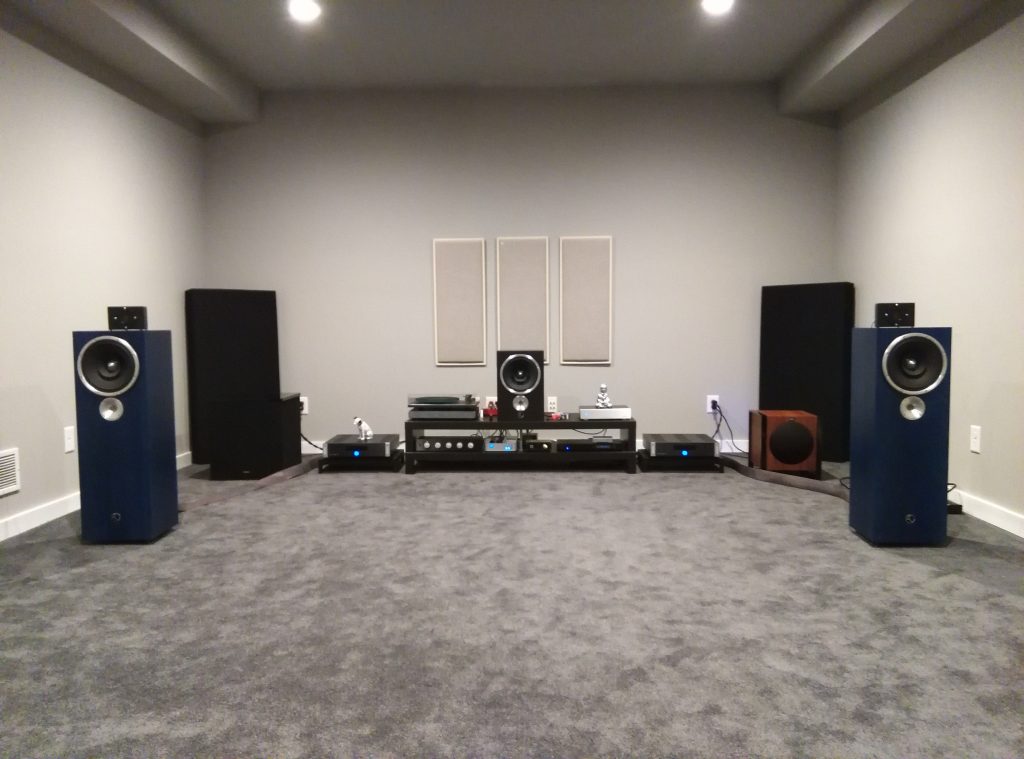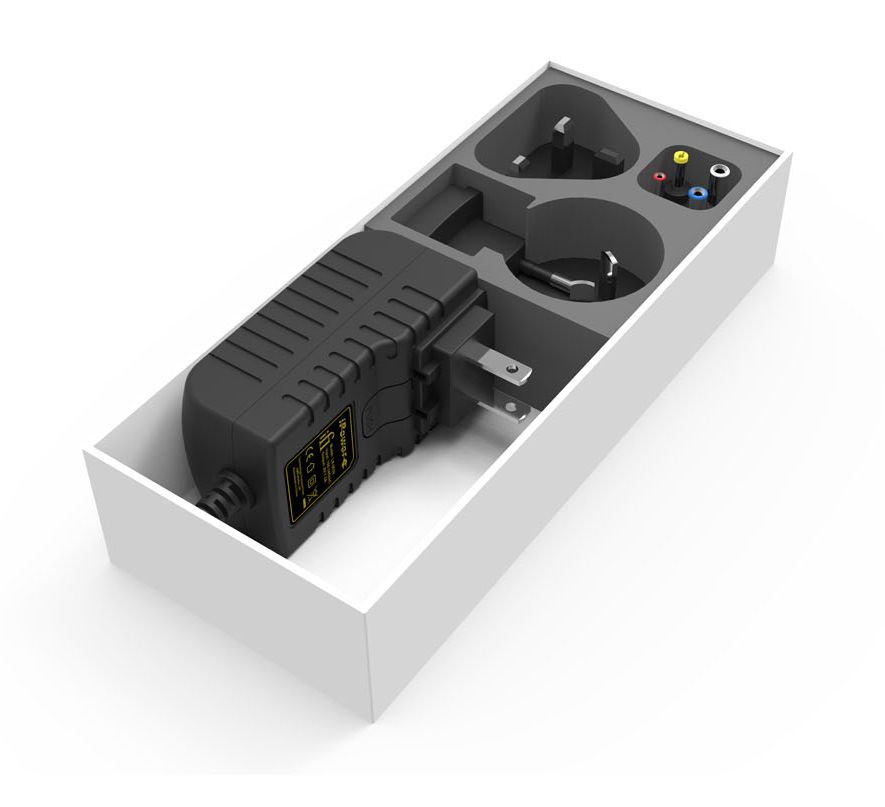Sonore microRendu Sonora microRendu
Listed · 976 Views
This listing has ended.
Listings Similar to Sonore
Time Left: None
This listing has ended.
| Condition | |
| Payment methods | |
Contact seller after sale to pay viaVISA/Mastercard | |
| Ships from | Los Angeles, CA, 90077 |
| Ships to | United States and Canada |
| Package dimensions | unspecified |
| Shipping carrier | UPS |
| Shipping cost | Specified after purchase |
| Research Pricing |
microRendu - "As new" Original design with the Sonore Top Signature Power Supply...
(Sig Power supply $1,589 + microRendu $499) = $2,088.

Vade Forrester with The Absolute Audio reviewed the microRendu - March
13, 2018. Vade said, "But the microRendu doesn’t sound good in spite of
being small—it sounds good because it’s small."

The Sonore microRendu is an audiophile micro computer with Ethernet input
and USB Audio output. The microRendu utilizes a proprietary printed circuit
board with only the essential components. The microRendu is small and light
weight. Connect the microRendu directly to your USB device via a USB cable
or hard adapter eliminating the need for a USB cable. Don't let the size
fool you though because it's been designed to take into consideration all
that is important to USB Audio. The microRendu is easy to configure and
can accept audio streams from several digital sources.
What makes the microRendu different from a typical computer music server
is that it's a purpose built audiophile device. The problem with computer
music servers is that they all rely on mass produced motherboards designed
for general purpose computing and are built to the lowest possible price
point. The microRendu solves this problem by removing the consumer grade
computer peripherals and optimizing power supplies where necessary. The
microRendu has been specifically built for processing USB audio perfectly.
You can also combine the microRendu with an audiophile grade linear power
supply to achieve the lowest possible noise floor.
SELECTABLE OUTPUT MODES - Sonicorbiter 2.5
- Mode #1 - SqueezeLite Output - This output works with any Logitech Media
Server and compatible controllers. This output supports true gapless playback
of PCM, DSD/DoP, and native DSD. - Mode #2 - ShairPort Output - This is an AirPlay emulator that utilizes
streams sent to it from a compatible source. This output supports true
gapless playback of PCM. - Mode #3 - MPD/DLNA Output:
Mode #3a - DLNA Output - This output utilizes streams from UPNP/DLNA servers
and controllers. This output can be configured as an OpenHome renderer.
This output supports true gapless playback of PCM, DSD/DoP, and native
DSD.
Mode #3b - MPD Output - This output is intended to work with a SMB mount.
This output supports true gapless playback of PCM, DSD/DoP, and native
DSD.
Mode #3c - Songcast Output - This output accepts streams from your computer
running Linn Songcast. The application is in Beta form. - Mode #4 - HQ Player NAA Output - This output utilizes streams from Signalyst's
HQ Player running on your computer. Digital signal processing is performed
by HQ Player and then asynchronously streamed to the Network Audio Adapter
(NAA) output. This output supports true gapless playback of PCM, DSD/DoP,
and native DSD. - Mode #5 - RoonReady Output - This output utilizes streams from Roon. This
output supports true gapless playback of PCM, DSD/DoP, and native DSD. - Mode #6 - Spotify Connect Output - This output can be controlled by your
computer or tablet running the Spotify application. This application
is based on librespot - an open source client library for Spotify.
The application is in Beta form.
====================================================
Signature Rendu SE - single enclosure linear power supply.


Comes with spectacular BEST Signature Linear Cost No Object Power supply in Silver
(see pictures).
This pair the microRendu & matching Sonore Signature Reference Power supply was featured in Weinhart Design's Reference System and sounds TRULY FIRST CLASS and is the top choice of top Reviewers & and many in the know...
HIGHLY RECOMMENDED and is a true Reference Music Server loaded with the top exciting features like Roon Labs.
Positive Feedback rave review states (see link):
https://positive-feedback.com/audio-discourse/sonore-microrendu/
The Sonore microRendu and Signature Series Linear Power Supply:
04-02-2017 | By Tom Gibbs | Issue 90
The focus of this review is to contrast the
Sonore microRendu and Signature Series linear power supply with
affordable power supplies from Channel Islands Audio and iFi Audio, in a
Roon-based headless environment. But before we get into
that, a brief summation of the recent past: from the point when I first
came in contact with Adrian Lebena at Sonore regarding the microRendu,
it was August of last year, and the microRendu was all the rage
everywhere. For those of you who might not be familiar, the microRendu
is actually a very powerful microcomputer, and is smaller than many
personal portables—it would easily fit in your shirt pocket. It contains
an SD card that provides the Linux operating system that controls the
device, and the only inputs are for an Ethernet connection and a power
source. The only output is a standard USB-A type, for connection to your
digital-to-analog converter. The microRendu allows you to stream music
over your network from an attached storage device (in my case, a NAS),
using your choice of music library management software to feed your
digital files to your DAC. It couldn't be any less complex, and the
design goal of removing your noisy computer from the playback chain is
easily accomplished.
Adrian and I mutually agreed a review on PF
was a great idea, but with Sonore's current production run of
microRendu's having recently sold out, a review unit probably would not
be available for an extended period of time, which actually worked great
for me. My current circumstances were that I was building a new home,
and still living in my brother's basement (that we lovingly referred to
as the Dungeon), with only a
rudimentary headphone and computer-based audio setup going. And the
timeline for getting into the new house was getting less clear with each
passing day. So, no worries, no pressure, no stress, right?
Of course, the review unit showed up less than ten days later
(bundled with iFi's $49 USD iPower ultra low noise supply), leaving me
to do lots of necessary backpedaling and explaining, regarding my
ongoing personal situation and its relationship to the proposed timeline
for the upcoming review. Adrian was very cool about all this, and it
did give me ample time to reach out to Channel Islands Audio with regard
to getting a top-notch (and reasonably priced) linear power supply they
were currently developing that would work in perfect harmony with the
microRendu (according to Adrian). Dusty Vawter at CIA let me know that
they had a couple of prototypes for the new linear power supply, and
that with a minor voltage adjustment, it would essentially replicate the
production model that was being prepared, only with a generic
faceplate. The power supply would have an estimated MSRP of about $300
USD. I thanked him profusely, and the power supply arrived in September.
So everything basically sat around in boxes until mid-December,
with delay after lengthy delay from the builder pushing things back at
every turn. When it finally became apparent that we might actually move
in in early January, I took the plunge and arranged for a trial of the
Roon music server software, and then hooked up the microRendu and the
iFi power supply to the small system in the Dungeon.
By this point, I had acquired a QNAP NAS, with an additional solid
state drive attached (for storage of Roon's Core), and had ported over
all my music files in anticipation of the move actually occurring. I
then began playing about with the entire setup to get a good working
grasp of how both Roon and the microRendu functioned; you can read about
that experience and more in-depth information on the NAS setup
procedure HERE.
I copied the folks at Roon Labs on that posting, and Rob Darling
responded with a very generous offer of a seven-month extension of my
Roon trial to aid with the review process. Within a month, we were moved
in with most everything unpacked and set up, and with the new listening
room in progress.
My new room (setup is still ongoing!) is much larger than my previous
space; it measures about 15.5 feet x 26.5 feet with a 9 foot ceiling
height—it's almost double the volume of my earlier space of twenty-plus
years. Not cavernous by any stretch of the imagination, but nonetheless,
it's taken some effort to tame an insidious slap echo; I played with
speaker placement and room treatments for weeks before I was halfway
satisfied with the results. And the ongoing demands of being a working
stiff, along with trying to help the wife with the continued setup,
decorating, and landscaping associated with being a new homeowner has
left me with precious little time to try and get everything arranged as
I'd like it in the listening space. It just takes a lot of time!
The room was designed to come as close as my budget would allow to
matching the Cardas Golden dimensions; it's not mathematically spot-on
(no thanks to my builder, who screwed things up at every turn), but is
closer than anything I'm likely to own in my lifetime. I decided to err
on the side of a larger room that was lacking a bit in ceiling height
versus going with a mathematically correct but much smaller room. I had
electrical power for all equipment set up on independent circuits, with
separate dedicated circuits for amplifiers and sources. And all the
remaining outlets and lighting in the room is placed on the opposite
power rail of the breaker box so as to create as quiet an electrical
environment as possible within. I also located all computer and network
equipment in an adjacent room to eliminate any computer and RF-based
noise within the stereo system. The entire house is wired with Belden
CAT 6 cable, but the listening room network connections are wired with
Belden CAT 6A cable. All patch cables are Belden CAT 6A from Blue Jeans
Cable. All lighting is LED, and dimming is via Lutron ELV, and is
completely noiseless.
During my initial explorations into the microRendu while still in the Dungeon,
I only used the iFi iPower device to provide power for the mR. Although
its rated to deliver nine volts, and microRendu's ideal power supply is
seven volts, Adrian assured me that the mR would perform ideally with
the slightly higher voltage rating, if perhaps running a bit hotter. It
served admirably, and the packaging for the iPower offers connection
options for just about any audio (or other) device you own that's
powered by some sort of wall-wart supply. It's without a doubt the
finest device of it's type I've ever encountered, and while the mR
sounded great via the iFi iPower, it begged for cleaner and more stable
power. I don't want to understate the value of the iFi iPower—I've got
numerous ancillary devices that use wall-wart power supplies, and
replacing them with the iFi unit always resulted with improved
performance and much cleaner sound. It's currently powering my Rolls
Bellari VP-129 tube phono preamplifier that's attached to my Rega P2
table, and the improvement in sound is dramatic, to say the least. I
plan on replacing every wall-wart based device I own with one of these,
and pronto! But now that we're in the intended evaluation environment, I
connected the Channel Islands Audio VDC 7 Mk. II prototype linear power
supply, which immediately offered a clear improvement over the iFi
unit.
In my previous system setup at the old place, I used a
JPLAY/Fidelizer software combo on my PC, along with MinimServer for
management of my music library. Prior to that, I'd been using JRiver
Media Center, and still had JRMC 21 loaded on the PC. MinimServer,
Bubble DS and Linn Kazoo—and many of the other software packages that
can easily be used with the microRendu—are based on the OpenHome
architecture, which allows for substantial modifications and integration
into your particular system. I had many of the parts that Adrian
recommended already present in my system, with a reasonably good working
knowledge of just about everything. And I'd been using Roon for about a
month, so I was very interested to hear how everything would sound on
the big system in the new room.
With the microRendu and Roon, it's essentially as easy as point and
play—you select Roon as your output mode, and then Roon finds your
library and the mR, and the music plays, and effortlessly. Roon is a
very powerful software suite that will manage every aspect of your music
collection, in addition to offering you the opportunity to manage your
subscriptions to Tidal and Qobuz. And the sound quality is superb, even
if the software is perhaps a little too intrusive on the overall
experience for my personal tastes. I really just want to access the
music easily, and in a logical (for me) manner that allows me to locate
the files I want to play with a minimum of fuss or effort. If you're
wowed by intense graphics, artist backstories, and access to an absolute
goldmine of metadata with constantly running 24/7/365 management, Roon
just might be your piece of cake.
========================================
Please
note: We have lots of great stuff it is best to call David your Audio Expert.
=========================================
Weinhart Design has lots of other items new and used and if
you're in Los Angeles or visiting please accept my invitation to
experience our Audio Showroom and please visit our ALL NEW & IMPROVED web site @ www.weinhartdesign.com
We are always interested in purchasing quality Audio and Video items, LP collections and most quality trades are welcomed.
If you are
in Los Angeles or visiting please make it a point to visit our new
world class Los Angeles showroom by appointment and experience what is
possible.
VISA, MC and Paypal are only accepted in the United
States and Canada and WE ONLY SHIP to the BILLING ADDRESS or take bank
wire transfers.
For transactions using VISA, MC and
Paypal we add 3% to cover the costs and only ship to billing address
UNLESS you are paying by Bank wire transfer.. All sales out of California are State Sales Tax exempt.
California State Sales Tax of 9.5% is only is collected for items received in California.
We accept payments by Bank Wire Transfers and bank checks without 3% added fees.
Please
call me directly in my world class showroom in Los Angeles weekdays @
310-472-8880 or any reasonable time on my cell including weekends @
310-927-2260 and I can answer your questions and help you with all of
your new and pre owned needs.
Making Audio Systems better
one system at a time,
David Weinhart
Weinhart Design, Inc.
President & CEO
e: [email protected]
www.weinhartdesign.com
The Audio and Video Expert
2337 Roscomare Road, Studio #1
Los Angeles, California 90077
Showroom) 310-472-8880
Cell) 310-927-2260
No questions have been asked about this item.
Ask the seller a public question
You must log in to ask a question.
Return Policy
Return Window
Returns are not accepted on this item.






